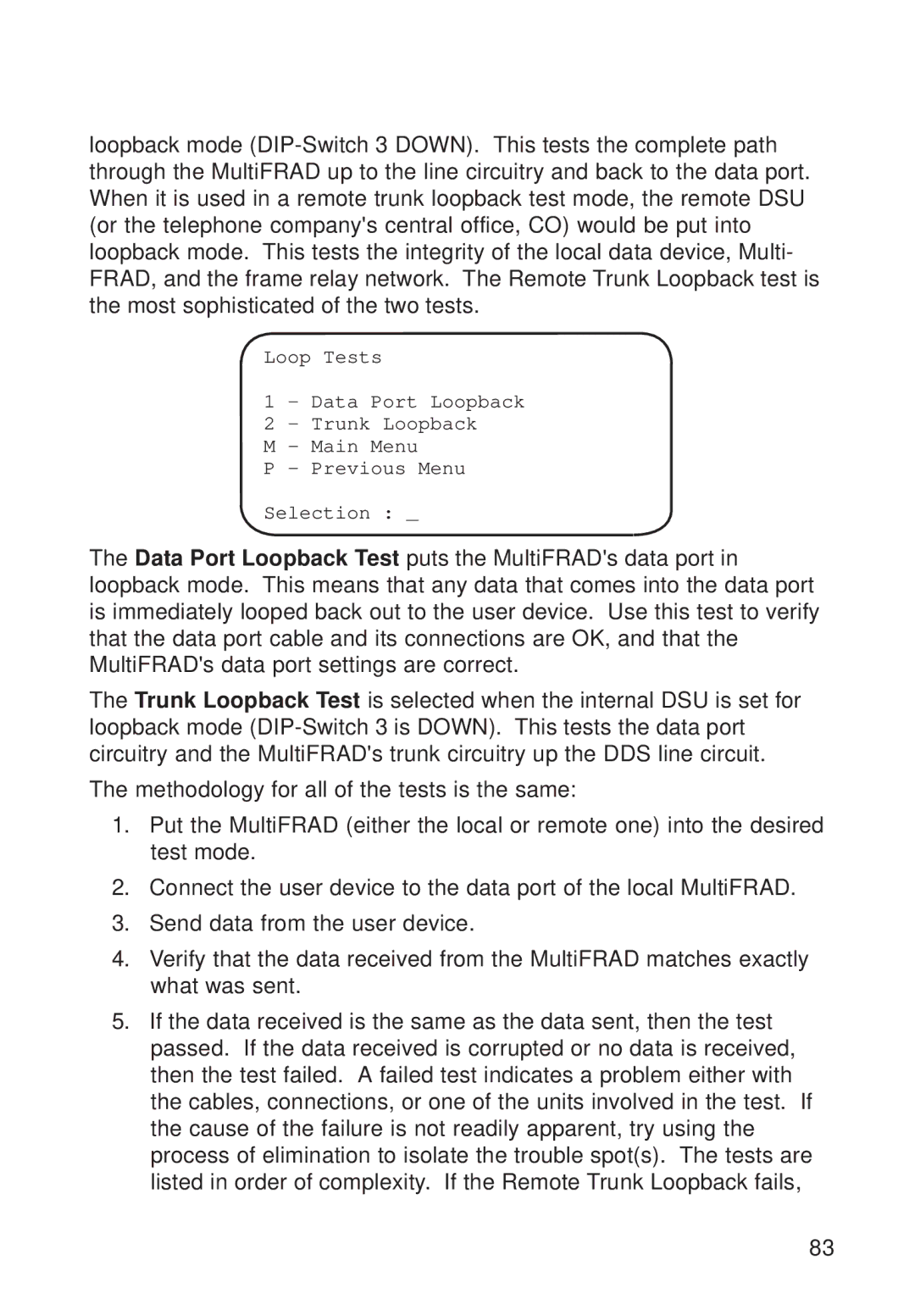
loopback mode
Loop Tests
1 - Data Port Loopback
2 - Trunk Loopback
M - Main Menu
P - Previous Menu
Selection : _
The Data Port Loopback Test puts the MultiFRAD's data port in loopback mode. This means that any data that comes into the data port is immediately looped back out to the user device. Use this test to verify that the data port cable and its connections are OK, and that the MultiFRAD's data port settings are correct.
The Trunk Loopback Test is selected when the internal DSU is set for loopback mode
The methodology for all of the tests is the same:
1.Put the MultiFRAD (either the local or remote one) into the desired test mode.
2.Connect the user device to the data port of the local MultiFRAD.
3.Send data from the user device.
4.Verify that the data received from the MultiFRAD matches exactly what was sent.
5.If the data received is the same as the data sent, then the test passed. If the data received is corrupted or no data is received, then the test failed. A failed test indicates a problem either with the cables, connections, or one of the units involved in the test. If the cause of the failure is not readily apparent, try using the process of elimination to isolate the trouble spot(s). The tests are listed in order of complexity. If the Remote Trunk Loopback fails,
83
